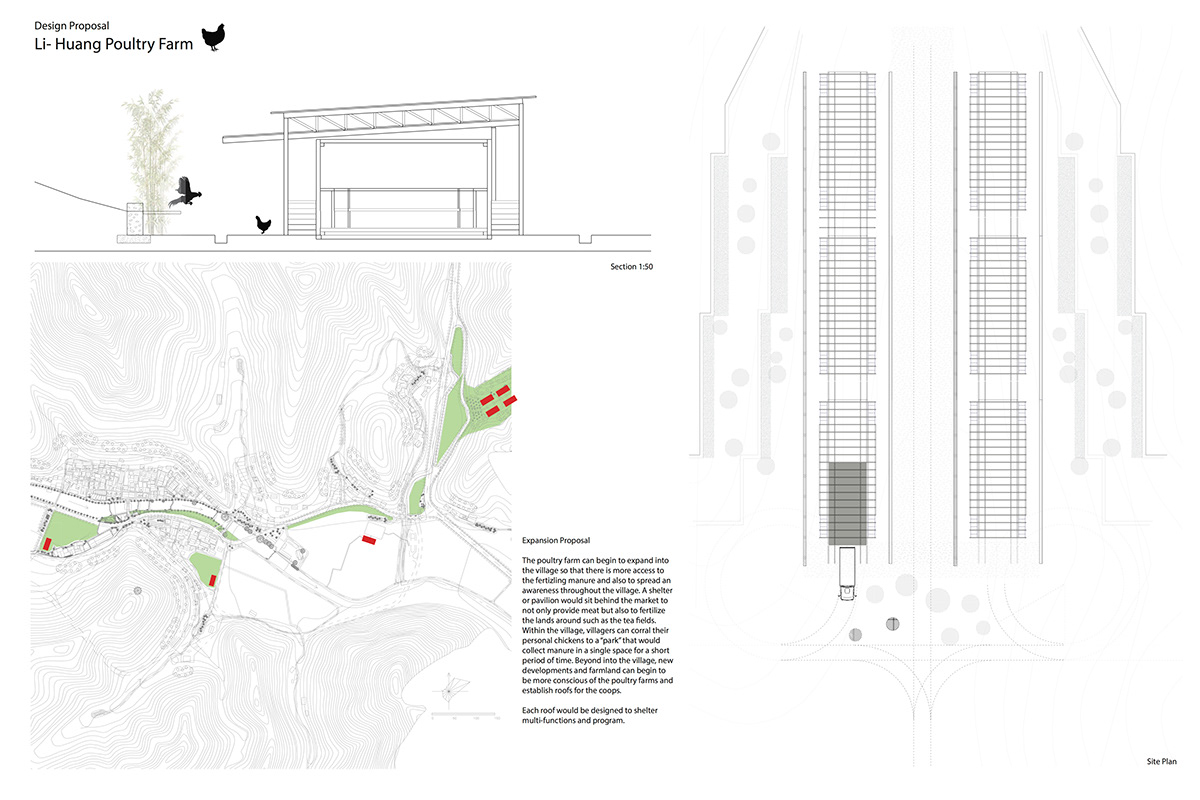Architecture // Li-Huang Chicken Farm
Professor: Peter Tagiuri
Year: Fall 2014
Professor: Peter Tagiuri
Year: Fall 2014
The Li-Huang village is a Chinese village located in Southern China. It is a agricultural village, depending economically on its fruits and vegetables, sold at the local village market. With new technologies and urban development pushing against the village growth, the village is beginning to lose its identity. This issue can be resolved architecturally through implementing new systems and order. In order to restore and revive the village's cultural prosperiy and maintain a sustainable, organic way of agricultural practice, the polluted chicken farms were the targeted strategies. The poultry farms offered great opportunity and reward, with little input and greater output.
Traditional chicken coops were studied to maintain the honesty of chicken coops but were also modified to adjust to a new system designed for mobile chicken farms. By beginning with the design of the roof and its infrastructural associations to Chinese landscapes and practical uses, the structure was defined by the context, environment, and use. The new structures and systems are designed as probes to be voted on and implemented by the Li-Huang Chinese villagers.
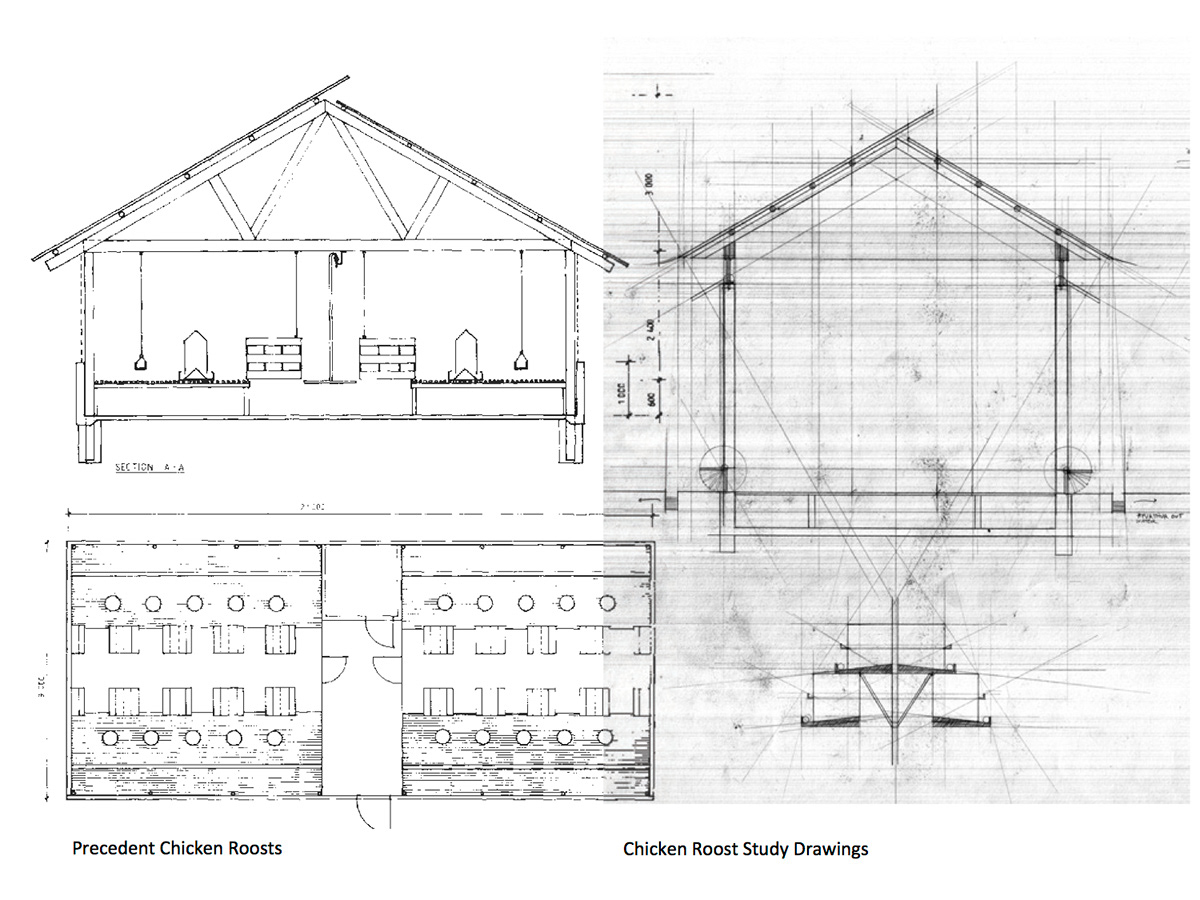


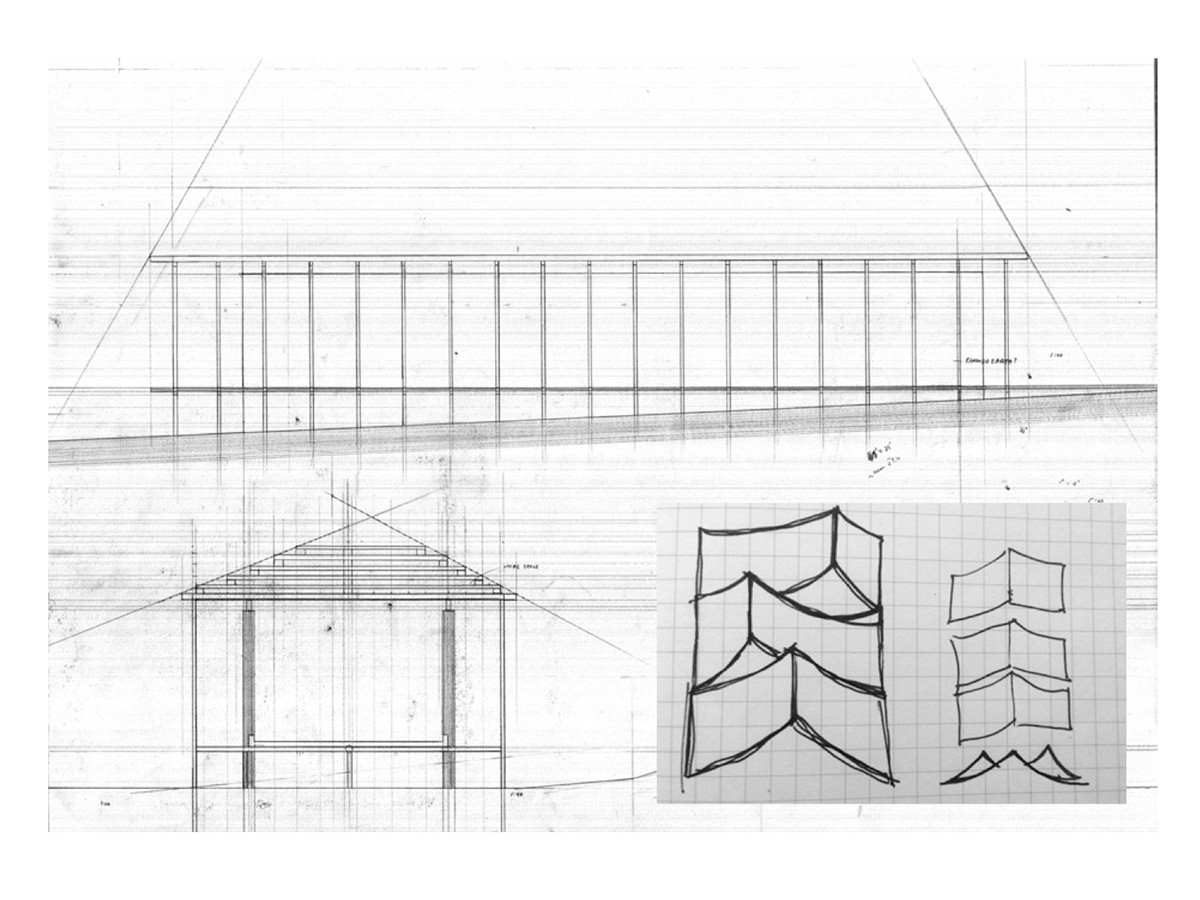

In order for the chickens to be happy, they must have plenty of outdoor space and open range. The idea of densely packed, less regarded, and quickly moving poultry farms is solely for eceonomic gain and efficiency. To reframe this view, the poultry farm must be viewed as a system that by producing healthier, more organic products, it creates a far better output or reward. Sanitation, pollution, and waste are key issues with maintaining a poultry farm. To address the manure issues, the strategy is to distribute the densley populated chickens within the site.
The chicken coops become mobile. The roof shed remainds permanent as the coops are constantly shifting over time. A monthly shift system will be implemented to create a cycle that begins with chickens, then the fertilization of soil, and finally planting vegetation and the possibility of green houses. As the coops are being distributed in Li-Huang, plots of land are become much more and more versatile and fertile, producing greater vegetation and fruits for economic growth.
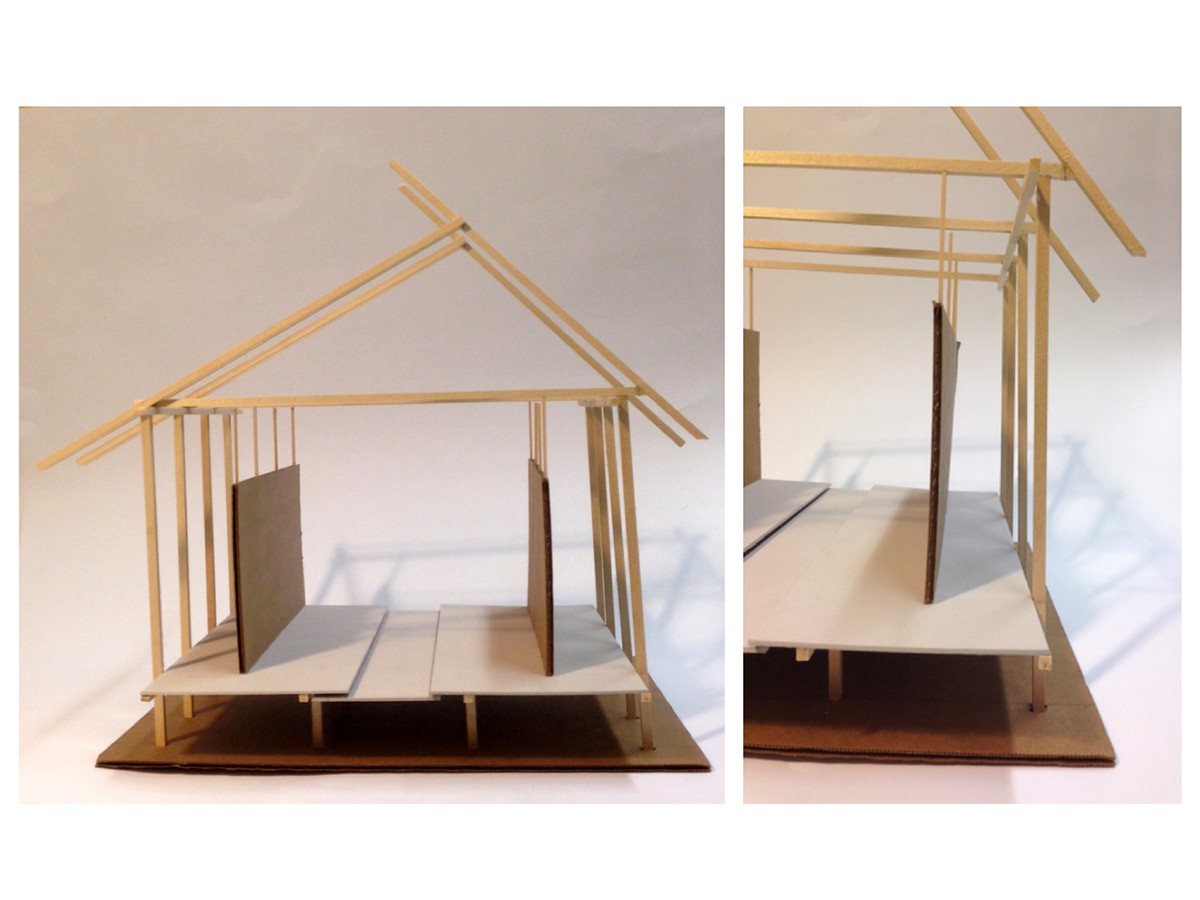
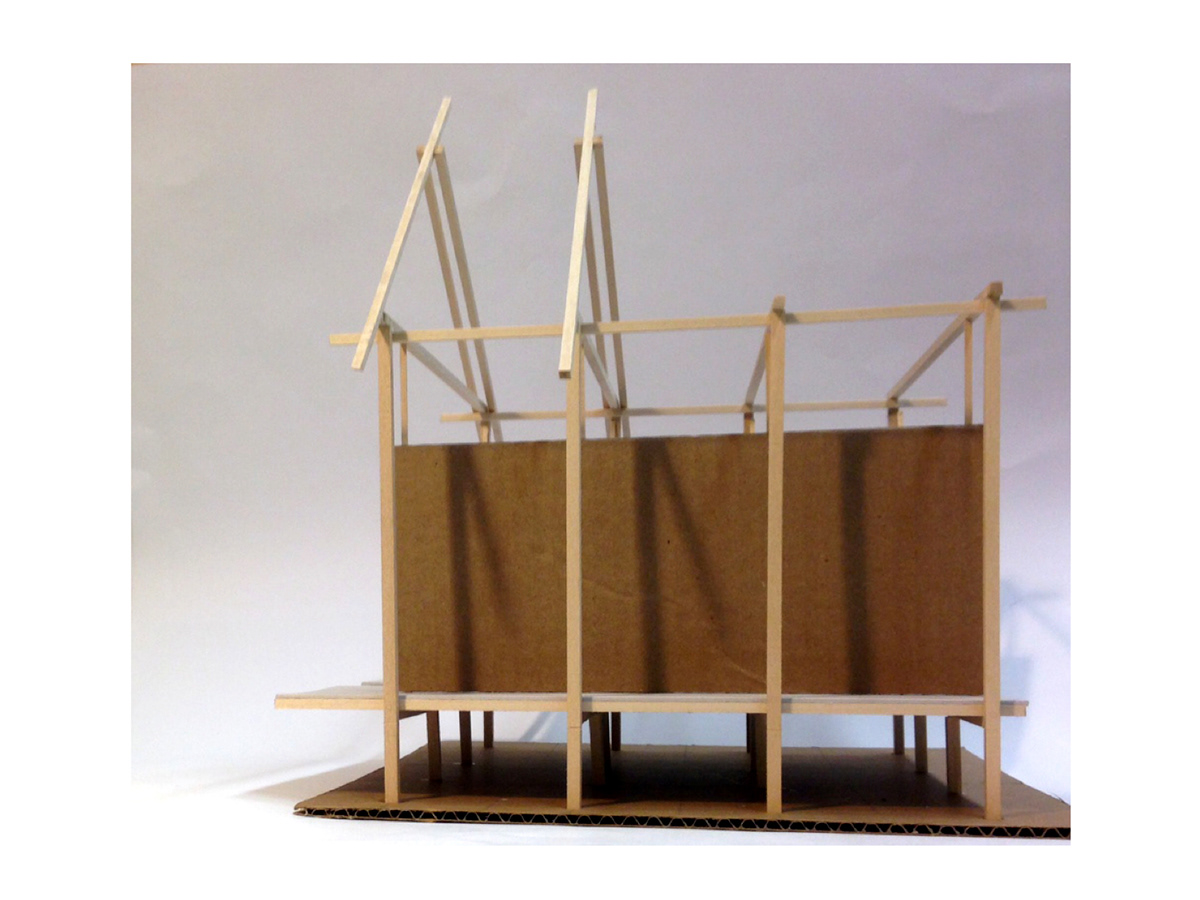
Final Boards



